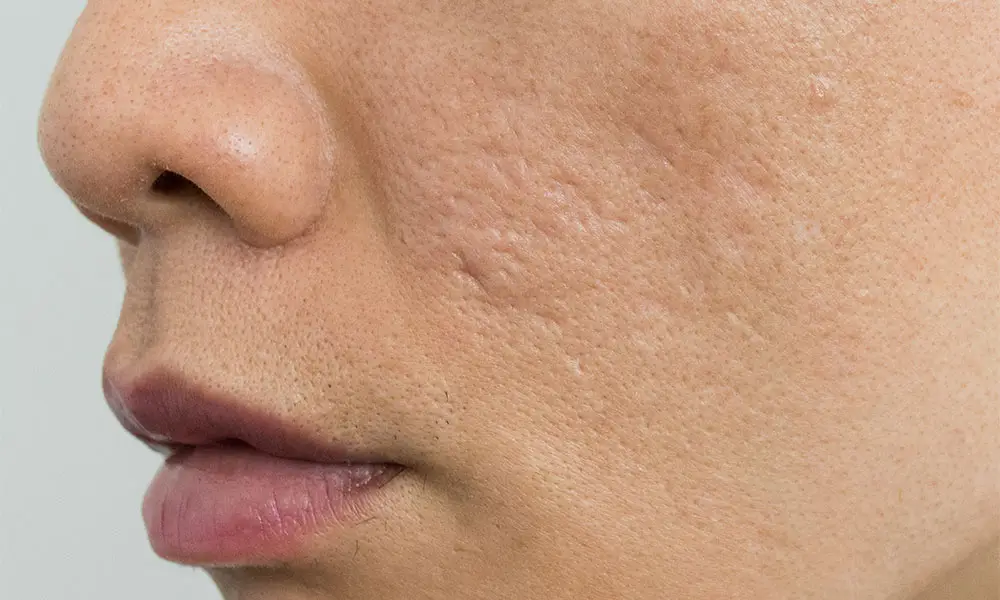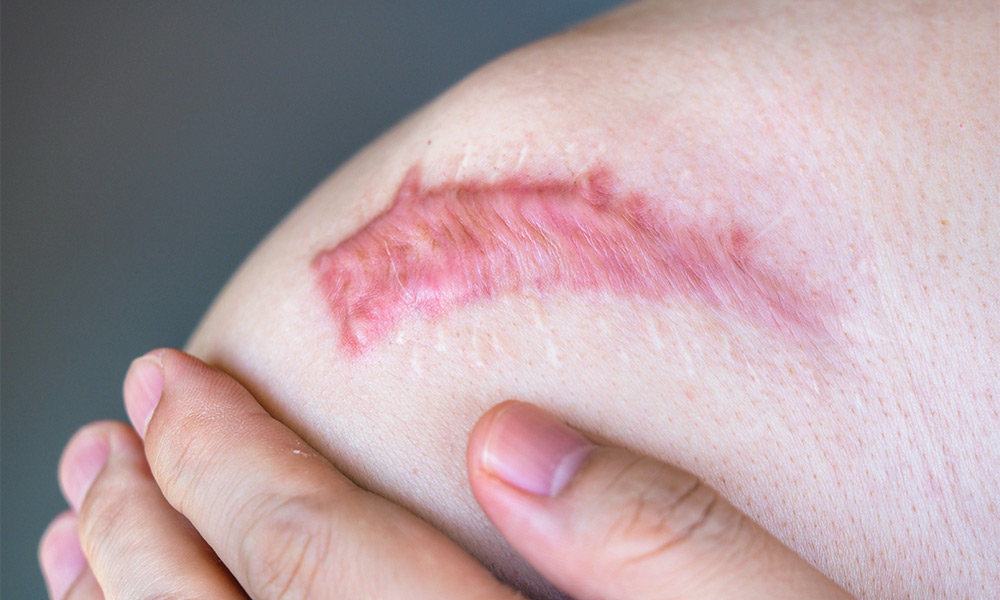Melbourne Eastside Dermatology is a recognised specialist dermatology practice in the Melbourne eastern suburbs utilising the Lumenis Acupulse™ CO2 Laser system.
One of the commoner procedures performed in the practice include CO2 laser. We are a recognised expert Melbourne Dermatologist for Acne Scarring.
Lumenis™ is a well established laser device company manufacturer that is well recognised to be forefront in producing CO2 lasers for dermatology, aesthetics and other medical purposes. Acupulse laser system is one of the most recognised and advanced CO2 lasers available in the dermatology clinics.
Acupulse™ CO2 Technology
Explained
CO2 laser emits tiny pulses of energy, and this was absorbed by both the superficial (epidermis) and deeper (dermis) layers of the skin.
The technology of “fractionation” allows tiny micro channels of tissues being treated, instead of the full area. This technology has revolutionised the laser resurfacing, compared to the full-ablative treatment, with the end result of this laser being much safer and with a quicker recovery. While it does go through a phase of fairly intense swelling, weepiness, and flaking, the typical recovery time is 1 to 2 weeks, followed by a period of red/brown skin changes (ranges between a few weeks to some months).
Acupulse also allows full non-fractionated ablation treatment, and this allows for more aggressive resurfacing, or removal of skin lesions such as warts, seborrhoeic keratosis, syringoma, xanthelasma and rhinophyma.
Acupulse™ CO2 Laser System
Melbourne Eastside Dermatology is a recognised specialist dermatology practice in the Melbourne eastern suburbs utilising the Lumenis Acupulse™ CO2 Laser system.
One of the commoner procedures performed in the practice include CO2 laser. We are a recognised expert Melbourne Dermatologist for Acne Scarring.
Lumenis™ is a well established laser device company manufacturer that is well recognised to be forefront in producing CO2 lasers for dermatology, aesthetics and other medical purposes. Acupulse laser system is one of the most recognised and advanced CO2 lasers available in the dermatology clinics.
Acupulse™ CO2 Technology
Explained
CO2 laser emits tiny pulses of energy, and this was absorbed by both the superficial (epidermis) and deeper (dermis) layers of the skin.
The technology of “fractionation” allows tiny micro channels of tissues being treated, instead of the full area. This technology has revolutionised the laser resurfacing, compared to the full-ablative treatment, with the end result of this laser being much safer and with a quicker recovery. While it does go through a phase of fairly intense swelling, weepiness, and flaking, the typical recovery time is 1 to 2 weeks, followed by a period of red/brown skin changes (ranges between a few weeks to some months).
Acupulse also allows full non-fractionated ablation treatment, and this allows for more aggressive resurfacing, or removal of skin lesions such as warts, seborrhoeic keratosis, syringoma, xanthelasma and rhinophyma.
Acne Scarring
Acupulse CO2 laser can be applied effectively to reduce a variety of pitted acne scars, including ice-pick scars, box scars, rolling scars and raised hypertrophic scars.


Traumatic, Surgical and Keloid Scarring
CO2 laser can be used by itself or in combination with vascular laser and medications / injections to reduce traumatic, surgical or keloid scars.
Full Face Resurfacing
Striae (stretch marks) of a variety of causes, ranging from growth spurt, hormonal change, body contour change to pregnancy can be reduced with Vbeam laser in combination with other modality.


Eyelid and Lip Wrinkles
A modified light Vbeam laser setting can reduce bruising anywhere on body almost instantly , reducing the bruising changes within 24-48 hours.
Before & After
Image not available temporarily
What does CO2 laser treat?
CO2 laser is excellent for treatment of a variety of scarring, including acne scarring, surgical scarring, keloid scarring and traumatic scarring.
CO2 resurfacing is excellent in improving wrinkling, textures, uneven skin tone and pores. It is typically used to reduce eye lid wrinkles and peri-oral wrinkles (the so called “lip smoke lines”).
Dermatologists also use this to treat skin lesions, including xanthelasma, syringoma, rhinopehyma, milia cysts, seborrhoeic keratosis, warts and (in suitable patients) moles.
Is CO2 laser safe?
With modern CO2 fractionation technology, the safety of CO2 has greatly increased. The pre- during- and post-laser care are extremely important to reduce infection with bacteria, fungus or virus (herpes simplex). Our clinic specialists will prescribe preventative oral medication, and you will given a very detailed post-care instruction sheets in terms of care of your skin, which is most important in the first 7 day. Instructions on how to continue to look after your skin for up to 4-12 weeks will also be discussed.
Apart from infection, the risks of CO2 laser also include scarring, pigmentation (post inflammatory hyperpigmentation)and skin whitening (hypopigmentation).
This is not a treatment for the “faintest of hearts” so we will have very detailed discussion before you make the decision to have this treatment.
On the other hand, isolated spot treatments of lesions (such as seborrhoeic keratosis, xanthelasma, syringoma etc) are very commonly performed by dermatologists. The recovery is usually relatively quick and the dermatologists will decide if your lesions are suitable, and the risk of scarring of these lesions.
Are there other options for scarring treatment?
In MEDerm, we are proud to offer a variety of treatment options for scarring (acne, traumatic, surgical, keloid), including micro needling, radiofrequency, pico-second lasers, FraxPro 1940nm/1550nm laser, and Beam vascular lasers. The decision of which modality is decided based on your type of scar, the risk of treatments, your skin colour and the down-time that you accept.
Majority of these alternative lasers do not have downtime as long as CO2 lasers, and may suit patients who need to be able to go back to function normally for work or for social events quickly. We are happy to discuss all the available options.
Do you combine other treatment options for scarring?
Yes, a lot of scars we treat are combined with other modalities, including injection of medications (such as steroid), collagen stimulating medication, and volumising medication. (We apologise and we are not able to mention the prescription medications on public websites due to medical board AHPRA advertising guidelines)
Often different lasers are also used in same session e.g. vascular laser, or topical therapy such as TCA-CROSS.
Is CO2 laser effective for wrinkle reduction?
CO2 laser is utilised to improve fine wrinkling (typically seen around the eyelids), and smoothen the “fixed” wrinkling (such as the “smokers line” around lips – note: You don’t have to be a smoker to have smokers lines!).
If you are concerned about the “dynamic rhytides” (wrinkles produced by movement of muscle) e.g. those of forehead, frown or crows lines, the suitable treatment will be the commonly performed periodic muscle-relaxant.
Can I have CO2 laser resurfacing?
We do not recommend CO2 lasers for the following patients:
- Oral retinoid therapy (used for acne or psoriasis – apologise we cannot publicise the actual names of medication due to advertising restrictions) within the last 6 months.
- Active cold sore infection / recurrent cold sore ***This is really important***
- Keloid scarring
- Pregnant or may be pregnant or undergoing IVF
- Breastfeeding
- Active skin infection
- Open wound
- Autoimmune conditions such as lupus, scleroderma or morphoea
- Medical conditions or taking medications making your skin prone to sunburn
- Vitiligo
- Fake tan / recent tanning in the last 4 weeks (or if you plan to tan in the next 4 weeks)
- Immunosuppressive therapy
- Chemotherapy in the last 12 months, or any previous radiotherapy on the treatment site
- Topical or injected anaesthesia allergy
- Antiviral tablet or antibiotic allergy
Is CO2 resurfacing painful?
The short answer is this is one of the most painful laser therapies.
Typically, we perform this in the clinic and employ the following strategies to ensure your comfort:
- Pain relief medication
- Topical anaesthesia for more than 45 minutes
- Injection of anaesthesia (either directly under treated sensitive areas, or as a ‘regional’ nerve block)
- Vibrationary distraction.
At the point, all procedures are done in the clinic, and therefore we cannot offer patients the option of general anaesthesia.
However, it is surprising to many patients that pain during the recovery period is usually very tolerable with simple pain relief medications and cooling / topical method. Any sudden increase in severe pain must raise suspicion of an infection , and needs to be dealt with by our treating team immediately.
What is the downtime for CO2 resurfacing for scarring / rejuvenation?
The downtime of fractionated CO2 laser varies between the more aggressive setting (higher energy with higher density), or the less aggressive setting.
A typical acne scarring downtime is as follow:
- 2-3 days of intense weeping, swelling, redness.
- Thereafter, skin dries up and sheds over 2 weeks.
- Skin usually remains red for a few weeks (sometimes a few months).
- In darker skin patients, there is a risk of post-inflammatory-hyperpigmentation (30-50% or higher depending on skin colour and settings). This may persist for at least a few months.
We may be able to employ lighter setttings for surface resurfacing (for rejuvenation), and limit the scaling to 1 week, with hopefully very light redness.
How many CO2 treatment sessions do I require for acne scarring or resurfacing?
For a higher density deep fluency treatment, we typically only offer 1 treatment to each patient. Full recovery and results take a number of months, so we would rarely consider repeating treatments within the first 6-12 months of treatment.
Given the risk and the downtime, we typically want to achieve the result with 1 treatment. The decision to repeat this treatment subsequently e.g. 12 months’ time, will need to be discussed with our dermatologists.
How do I prepare for CO2 laser full face resurfacing?
Pre-Treatment Checklist
- Please ensure you have not taken oral retinoid (Isotretinoin / Oratane / Roaccutane / other generic) last 6 months.
- Please STOP bleaching cream, topical retinoid/retinol, topical AHA for 2 days before laser therapy.
- Please ensure no tanning for 6 weeks pre-laser, and no plans for tanning 6 weeks after. Please sunprotect using a broad-spectrum sunscreen of at least SPF30+ regularly leading up to your treatment.
- Please ensure that someone is driving you home if you have treatment around the eyelids, or if you plan to have large surface of skin treated after.
- Please ensure someone at home with you for the first 2 days, if you have extensive areas on your face treated.
- If you have any infection (especially cold sores around lips and nose) in the 2 weeks prior, please contact our practice ASAP to reschedule your treatment.
- If you are given a prescription of medication, please ensure you take the tablets about an hour prior to the procedure.
- Eat and drink well before procedure to prevent dehydration.
- Avoid smoking and excessive alcohol 1 week pre- and post- laser.
What you require to purchase for your post-laser care
- Plain barrier moisturiser (We highly recommend silicone based Stratacel; Alternatively, La Roche Posay Cicaplast B5 Baume or a sterile new jar of Vaseline).
- White vinegar.
- Soap free cleanser such as La Roche Posay Toleraine cleanser, Cetaphil gentle wash.
- Low sensitivity moisturiser such as La Roche Posay Toleraine cream, Cetaphil cream.
- Paper towels (or disposable dry wipes) or a few clean towels, for cool compressors.
- Paracetamol
- Thermal water spray (optional)
- Prescription medications from your practitioner (may not apply to all patients).
What is the CO2 post-treatment care?
We will give a detailed day by day instruction after CO2 resurfacing treatment, including:
- Oral medications for infection prevention
- Pain relief
- Topical emolient care
- Topical infection prevention measures
- Suitability to go back to work, exercise.
- Sun protection
- Signs of infection to look out for , and emergency contact details of the clinic.
Where can I have Acupulse CO2 laser?
We are an official Lumenis™ recognised specialist practice use of Acupulse CO2 Laser Device. We perform CO2 laser in our practice in Blackburn South. You can ask for a consultation with us in our Blackburn South rooms or Croydon rooms.
We are within the vicinity of Knox, Wantirna, Mitcham, Ringwood, Burwood, Glen Waverley, Mount Waverley, Kew, Camberwell, Balwyn, Doncaster, Donvale, Templestowe, Box Hill, Mont Albert and Surrey Hills, and we serve a large referral base up to Croydon, Mooroolbark, Lilydale, Boronia and Yarra Valley / Yarra Ranges wineries.
